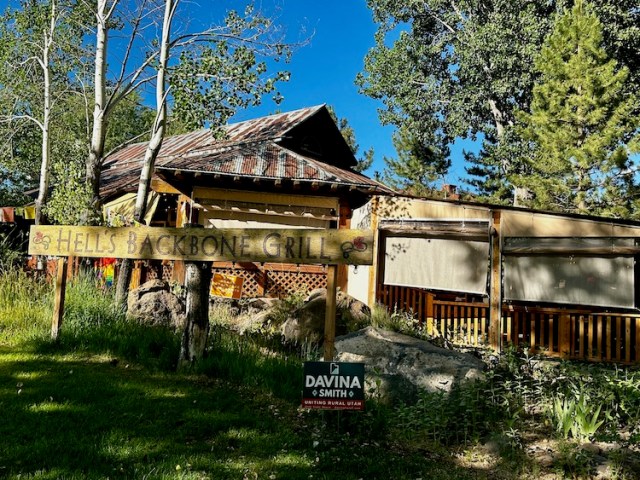
“I’m going to hell!
The worst place in the world!
With devils and those caves and the ragged clothing!
And the heat! My God, the HEAT!”
~Elaine Benes (Seinfeld: Season 9, Episode 16)
Most of us would describe Hell in similarly terrifying terms (albeit without the humor) as Elaine Benes did during a memorable episode of Seinfeld back in 1998. The Hell that existed in Elaine’s mind was indeed “the worst place in the world!” If Hell can be so nightmarish, can Hells Backbone be any better? Are there devils wearing ragged clothing and living in caves in Hells Backbone? Not in the Hells Background we visited in June, 2024.
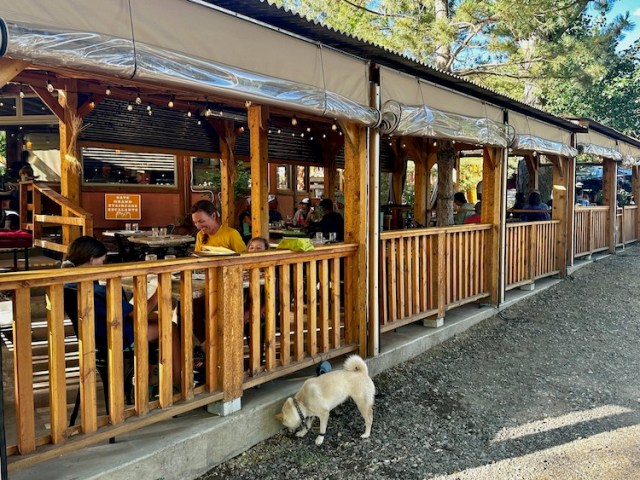
Hells Backbone in Southwestern Utah is a spectacularly rugged area bridging the towering Boulder Mountain on the north and the breathtaking canyons to the south cut by the Escalante River over millions of years. The Hells Backbone Road meanders through and past ridges and unearthly mountain contours that stagger the imagination. It winds from juniper and sage desert high up into the lush pine and aspen forest on Boulder Mountain and the highest plateau in North America. The Hells Backbone Road is one of the most scenic–albeit trecherous during stormy weather–backways in Utah. Precipitous drops to both left and right make attentive driving a must lest you risk experiencing a premature and permanent visit to Hell.
Hell’s Backbone is also the name of an acclaimed restaurant and no-harm organic farm which grows vegetables, fruits, herbs, flowers, and greens for the restaurant, as well as Boulder-raised, grass-fed local lamb and beef. Almost every scrap of discarded food goes back to the earth: either composted or fed to the farms chickens who produce beautiful farm eggs. Pests and weeds are managed using earth-friendly means. Natural nutrients and products such as leaves, manure, and composted food are built into the soil to fertilize plants without the use of chemicals, and artificial products such as petroleum-based fertilizers, herbicides, and pesticides are strictly avoided.
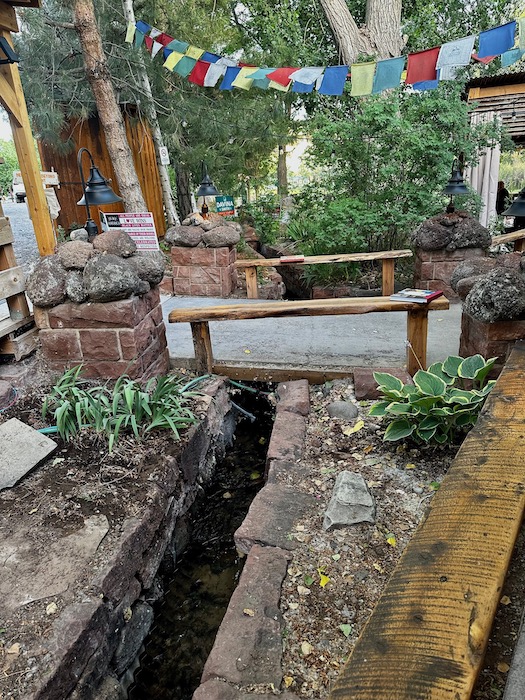
Owned and operated by chef-owners Jen Castle and Blake Spalding, the restaurant itself is unassuming, a rustic outpost that fits harmoniously in its agrarian surroundings. According to the restaurant’s website, “farm operation is supported by a skilled team of farmers and cooks who capture each morsel of food, either serving it fresh or preserving it, freezing it, or drying it for use in a lucky diner’s future meal. The owners stick close to Buddhist principles of sustainability, environmental ethics, social responsibility, and community involvement.”
The restaurant has become a destination for anyone driving Scenic Highway 12 or visiting Bryce Canyon or Capitol Reef National Parks. It’s not easy to get there, but whether you take the Southern route past Escalante and The Grand Staircase or a Northern route from as far away as Monument Valley as we did, take your time. There is too much to see on either route to make it a day trip or to rush to get there. For the duration of our drive, my Kim frequently kept asking “Why isn’t Utah the Land of Enchantment?” qualifying that its spectacular vistas, towering mountains and landscapes seemingly painted by God’s own brushes are even more beautiful than New Mexico’s own. Though I pride myself on my “New Mexiconess,” I couldn’t argue.
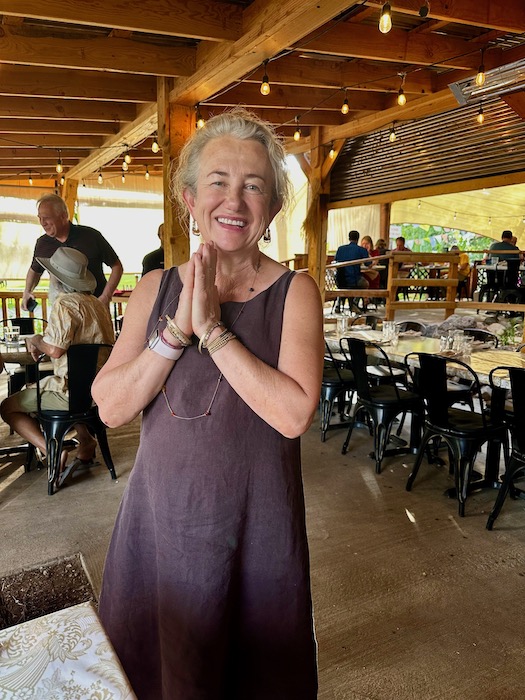
Despite its location in one of the most isolated towns in the contiguous United States, Hell’s Backbone Grill is one of the most honored restaurants in Utah–though shamefully it has not been awarded a “best restaurant” or “best chef” award from the James Beard Foundation (JBF). It did make it to the “best restaurant” semifinals in both 2022 and 2023, a significant accomplishment in its own right. Owners Blake and Jess were also finalists for the JBF “Best Chef” award for the Rocky Mountain region in 2020. In 2017, 2018 and 2019, they were semifinalists for the Best Chef-Southwest honors. To Blake it matters more that they continue to make the restaurant’s guests happy. The national press–everyone from Oprah to the New York Times to Bon Appetit and the Wall Street Journal–has visited and come away more than impressed. Now if only the James Beard Foundation judges could see just how deserving a women-chef owned restaurant which pioneered farm-to-table cooking is.
Though I’m not prone to name-dropping, when we met Blake Spalding, I had to share that we have a mutual friend in Cheryl Alters Jamison, herself a four-time James Beard award winning author. I, in fact, first learned about Hell’s Backbone in an article Cheryl penned about Southwestern food for Eater. She wrote “Blake Spalding and Jen Castle, the two-woman team behind Hell’s Backbone Grill & Farm in the wilds of southern Utah, were among the early wave of American chef-restaurateurs to start their own farm, showcasing the produce alongside local trout and grass-fed beef in dishes like a deep red-chile posole. Blake was thrilled to hear of our acquaintance with Cheryl.
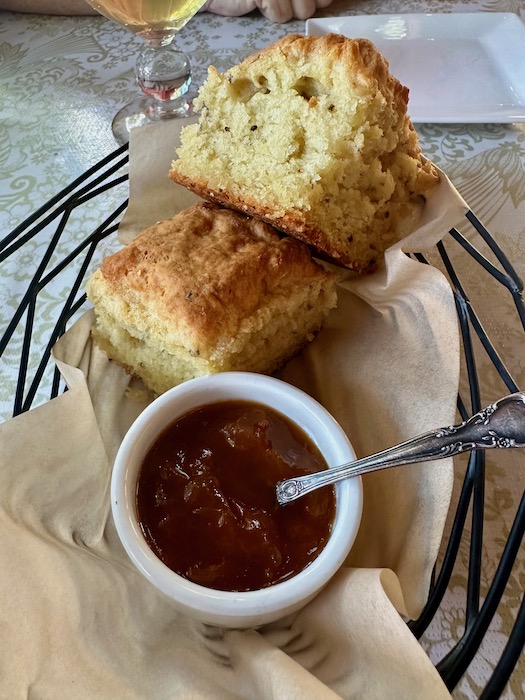
In a review of This Immeasurable Place, a wonderful cookbook written by Lavinia Spalding and the amazing chef-owners of Hell’s Backbone Grill, Cheryl added: “The authors lay out the seasons of the restaurant with humor, gentleness, and joy, but underpin it with their steely, unflinching resolve. Buy this as a cookbook and a keepsake of the truly immeasurable spirit of this community and the land.” Is it any wonder my Kim and I had to visit Hell’s Backbone, a remarkable gem which belies the infernal connotations of its name? Is it any wonder we hoped to meet Blake?
Hell’s Backbone has charm to spare–as does Blake, a peripatetic presence in both the interior and exterior dining rooms. She flits around with grace and elegance, meeting new guests and welcoming those who have made Hell’s Backbone a frequent stop. She urges one and all to fill up their water bottles with fresh, cold well water from a large sink on the walkway. “It’s our gift to our guests,” she told me. Nearby, a babbling irrigation system meanders lazily through the property. Canned and baked goods, tee-shirts and other keepsakes are for sale at a small concession stand.
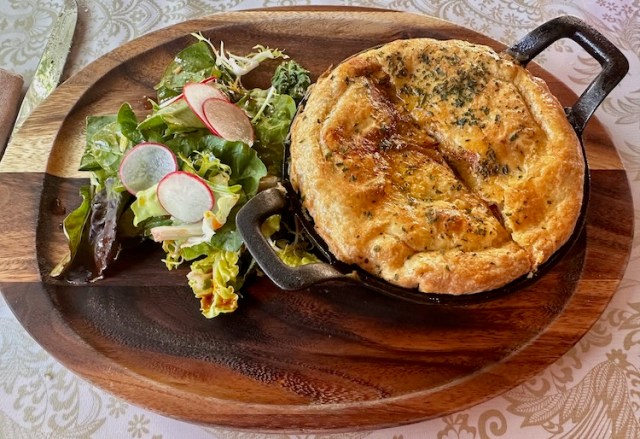
Hell’s Backbone should win a James Beard award on its service alone. The service staff is ambassadorial in its knowledge of the menu and of the local area. Our server Tyler was spot-on in his recommendations and on-the-spot with refills. His familiarity with the local area–its features, history and points of interest–gave me the material needed to introduce this review. He also told us the Boulder area is one of the most biodiverse spots in Utah, providing an important aquatic and riparian habitat for a wealth of wildlife. He raved about the night sky’s stellar stargazing opportunities.
Weather-permitting, the best seats in the house are on the spacious patio. It’s dog-friendly in that you’re allowed to leash your four-legged child on the railing adjacent to your seat. If you’ve traveled for hours to get to the restaurant, the patio offers much-needed respite from the rigors of driving. One commonality among diners is the sense of tranquility and peace the restaurant seems to inspire. That is, save for a few recalcitrant children…just being themselves.
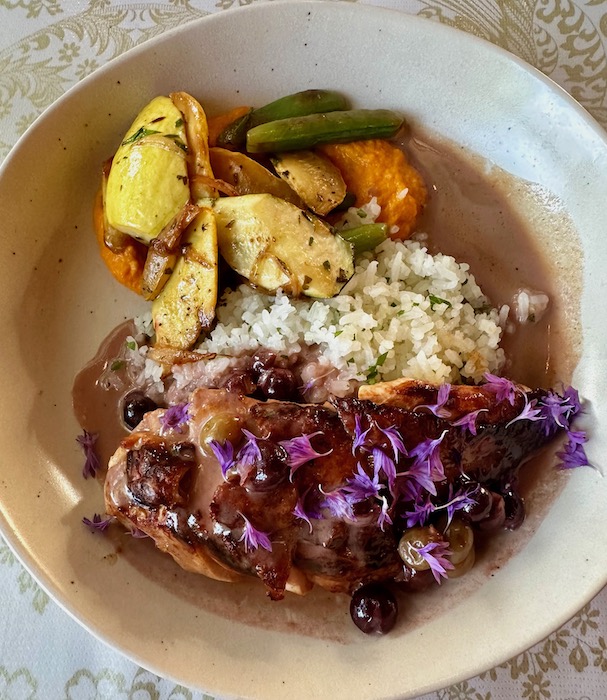
The menu is as spectacular as its backdrop. Hell’s Backbone serves “fanciful Four Corners cuisine: a blend of Western Range and Southwestern flavors, running through the kaleidoscope of the ever-changing offerings from our farm.” Fittingly Hell’s Backbone doesn’t shy away from devilishly piquant menu items, including several with red or green chile. Blake told us Jen has roots in New Mexico. That’s apparent in such dishes as the “Jenchiladas” (vegetarian calabasitas or organic chicken and cilantro in a spicy habanero corn cream sauce with cilantro-pepita green rice).
There are essentially three sections to the menu: Small Plates & Salads, Main Courses, and Desserts. Rather than risk filling up on two or three starters, we had just one–the blue ribbon black powder biscuits with a magical apriocot jam made on the premises. The biscuits are thick and dense. Tyler shared that they’re made with heavy cream, cold butter, black pepper and Redmond Real salt though he couldn’t give us the exact proportions of each. Fortunately, the recipe for those beauteous biscuits is available online.
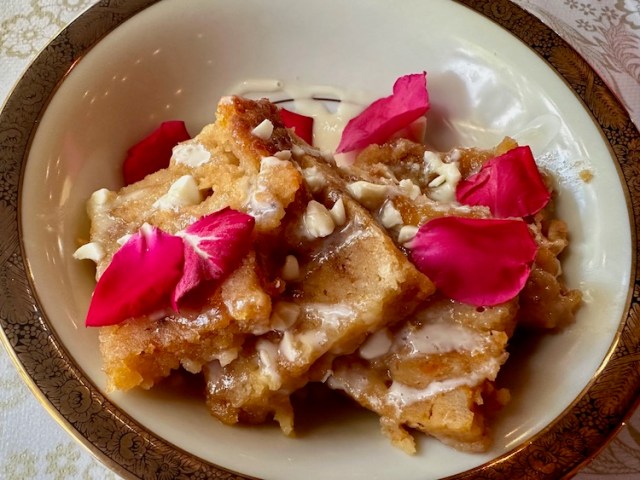
One of the main course specials for the evening was goat pot pie, a dish I’d never previously had. Over the years I’ve wearied of chicken pot pie (even when it’s made with green chile) primarily because the crust is too thick and rather insipid. The very first thing to notice about the goat pot pie is how light and buttery the crust is. It’s wholly unlike any other pot pie crust we’ve had. It’s advisable to let the dish cool down a little before digging in. Tyler recommended piercing the crust and letting the steam waft. It’s worth the wait. This is the best pot pie I’ve ever had. A rich and creamy filling replete with vegetables and generous bite-sized chunks of goat proved equal to the magnificent crust.
My Kim opted for the champagne grape chicken (pan-seared organic chicken breast in a creamy sauce of champagne, farm grapes, brandy and lemon parsley’d jasmine rice and an array of vegetables). Even more than the goat pot pie, this dish is an exemplar of the farm’s agrarian bounty. The vegetables (peas, zucchini, carrots, onions) are served al dente and have a delightful snap when you bite into them. If freshness has a flavor, it’s captured beautifully on those vegetables. The chicken breast is festooned with edible flower petals and is surrounded by farm grapes in a creamy sauce. Each bite of the delectable dish elicited a swoon from my bride.
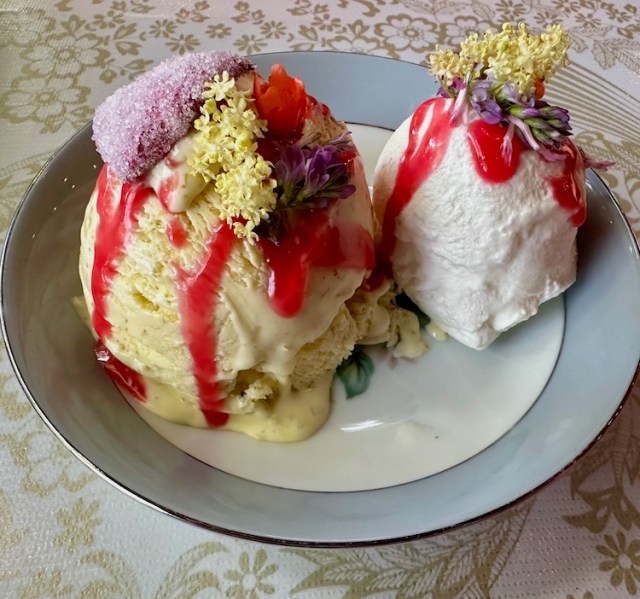
Not surprisingly, desserts are equal to the rest of the menu–meaning they’re absolutely superb. Obviously a man of discerning tastes, Tyler’s current favorite is the apricot white chocolate bread pudding (with farm apricots served warm with vanilla creme anglaise). It’s now one of my favorites. That is one of the best bread pudding dishes I’ve ever had–and I’ve had a lot of bread pudding in my days. My Kim’s post-prandial pleasure was a homemade chamomile ice cream, a picture-perfect pairing of rich, creamy ice cream and whipped cream. It’s a spectacular dessert that just might have us exploring real estate brochures to place us closer to Hell’s Backbone.
Hell’s Backbone Grill, like much of Boulder, closes every winter and reopens in the spring. At 7,000 feet in altitude, the farm has a limited growing season. Fortunately, two formidable and resilient women have figured out how to optimize crop growth and storage for a restaurant that’s one of the very best in the country.
Hell’s Backbone Grill
20 North Highway 12
Boulder, Utah
(435) 335-7464
Website | Facebook Page
LATEST VISIT: 20 June 2024
# OF VISITS: 1
RATING: N/R
COST: $$$$
BEST BET: Goat Pot Pie, Blue Ribbon Black Powder Biscuits, Champagne Grape Chicken, Camoumille Ice Cream, April White Chocolate Bread Pudding
REVIEW #1404